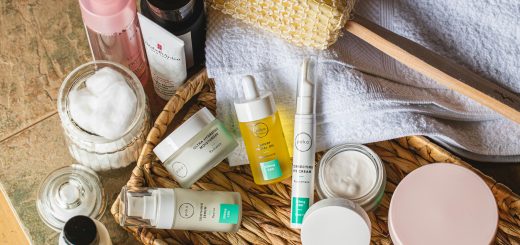The Best Flowers to Grow at Home
In our fast-paced modern lives, creating a peaceful and healthy home environment is more important than ever. One of the simplest and most natural ways to improve indoor air quality and add beauty to your living space is by growing flowers at home. Many indoor plants not only brighten a room but also help purify the air by absorbing toxins and releasing oxygen. Here’s a guide to the best flowers for clean air and essential tips for successful indoor gardening.
Top Flowers for Clean Indoor Air
Peace Lily (Spathiphyllum)
Peace lilies are famous for their ability to remove air pollutants like formaldehyde, benzene, and carbon monoxide. These elegant plants feature glossy green leaves and distinctive white blooms that add sophistication to any room. They thrive in low to medium light conditions and prefer slightly moist soil. Be careful not to overwater these plants, as they are sensitive to excessive moisture. Peace lilies will even show you when they need water by drooping slightly, making them perfect for beginners who are still learning to read plant signals.
Gerbera Daisy (Gerbera jamesonii)
These vibrant, cheerful flowers are not only visually stunning but also excellent at filtering benzene and improving oxygen levels, especially at night. Available in a rainbow of colors, gerbera daisies can instantly brighten any space while working hard to clean your air. They require bright, indirect sunlight and well-drained soil to thrive indoors. Water when the topsoil feels dry, but ensure the roots never sit in standing water. The colorful blooms can last for several weeks with proper care, making them an excellent long-lasting floral option.
Chrysanthemum (Chrysanthemum morifolium)
Chrysanthemums are powerhouses when it comes to air purification, effectively removing toxins like ammonia, xylene, and formaldehyde. Their dense, vibrant blooms come in countless colors and varieties, allowing you to match them to any décor style. These plants require bright light and regular watering to maintain their beautiful flowers. Keep them away from cold drafts, which can damage the delicate blooms. Though they may not flower year-round, their air-cleaning properties make them worth the effort even when not in bloom.
Lavender
While not primarily known for air purification, lavender brings additional benefits to your indoor environment. Its soothing fragrance has proven calming properties that help reduce stress and anxiety, creating a more peaceful atmosphere. The delicate purple spikes add a touch of cottage charm to any room. Lavender needs full sun and well-drained soil to thrive indoors. Find the brightest spot in your home, ideally near a south-facing window, and avoid overwatering to prevent root rot. The aromatic oils that give lavender its distinctive scent are most potent when the plant is slightly stressed, so don’t worry if the soil dries between waterings.
Orchids
These exotic beauties release oxygen at night, making them ideal for bedrooms where you spend many hours sleeping. Unlike many flowering plants, orchids are relatively low-maintenance once you understand their basic needs. They prefer indirect sunlight and require light watering approximately once a week. Their unique root systems are designed to absorb moisture from the air, so they should never sit in water. Orchids bloom for extended periods, sometimes months, providing lasting beauty while improving your air quality night after night.
African Violet (Saintpaulia)
Though not as powerful an air purifier as some others on this list, African violets are compact and perfect for small spaces like desktops or bathroom shelves. Their velvety leaves and delicate flowers in shades of purple, pink, and white add a touch of softness to your home. These plants require indirect light and consistent but careful watering to avoid wetting the leaves, which can cause unsightly spots. With proper care, African violets can bloom almost continuously throughout the year, providing ongoing visual interest while contributing to overall indoor air quality.
Indoor Gardening Tips for Success
Proper placement is crucial for indoor flowers. Each plant has specific light requirements, so observe your home’s light patterns before deciding where to position your plants. South-facing windows typically receive the most sunlight, making them ideal for light-loving flowers like gerbera daisies. East and west windows provide moderate light, suitable for peace lilies and African violets. North-facing windows offer the least light but can work well for shade-tolerant varieties.
Understanding the proper watering technique for each plant type is essential for their survival. Overwatering is one of the most common causes of indoor plant failure. Before watering, always check the soil moisture by inserting your finger about an inch into the soil. If it feels dry at that depth, it’s time to water. Always use pots with drainage holes to prevent water from pooling at the bottom, which can lead to root rot and plant death. Consider using self-watering pots or moisture meters if you struggle with consistent watering.
Quality potting medium significantly impacts plant health. Use soil specifically designed for indoor plants, as it provides proper drainage while retaining appropriate moisture and nutrients. Standard garden soil is too dense for container growing and may harbor pests or diseases. For specialized plants like orchids, use media specifically formulated for their needs, such as bark mixtures that provide the aeration their roots require.
Indoor flowers benefit from occasional fertilization to replace nutrients that get depleted from the limited soil in their containers. Use a balanced liquid fertilizer diluted to half the recommended strength during the plant’s active growing season, typically spring and summer. Reduce or eliminate fertilizer during fall and winter when most plants naturally slow their growth. Over-fertilizing can burn roots and cause more harm than good, so always err on the side of less rather than more.
Keeping your plants’ leaves clean allows them to photosynthesize efficiently. Dust accumulation blocks sunlight and can clog the tiny pores (stomata) that plants use to breathe. For smooth-leaved plants, gently wipe the surfaces with a soft, damp cloth every few weeks. For fuzzy-leaved varieties like African violets, use a soft brush instead. This regular cleaning not only improves their appearance but also enhances their air-purifying capabilities.
Indoor plants are susceptible to pests, especially when stressed or weakened. Regularly inspect the stems, leaves (including undersides), and soil for signs of common invaders like spider mites, aphids, or mealybugs. Early detection makes control much easier. Natural remedies like neem oil, insecticidal soap, or even a strong stream of water can effectively manage minor infestations without introducing harsh chemicals into your home. Quarantine new plants for a week or two before placing them near your existing collection to prevent pest spread.
To ensure even growth and prevent plants from permanently leaning toward light sources, rotate your containers a quarter turn every week or two. This simple practice encourages balanced development and more attractive plants. It’s particularly important for flowering plants, as uneven light exposure can result in lopsided blooms and weaker stems on the shadier side.
Creating a Healthier Home Environment
The benefits of indoor flowers extend far beyond their aesthetic appeal. As living air purifiers, they continuously work to remove common household toxins released by furniture, carpets, and cleaning products. These plants convert carbon dioxide into fresh oxygen through photosynthesis, literally helping you breathe easier. Research has shown that indoor plants can reduce stress levels, improve mood, and even enhance concentration and productivity.
Consider grouping plants together to create humidity-rich microenvironments, as most indoor flowers appreciate moisture levels higher than typical home air. This grouping strategy allows plants to benefit from each other’s transpiration while creating visually impactful plant displays. You might also consider placing containers on trays filled with pebbles and water to increase humidity without risking wet feet.
Don’t be discouraged if your first attempts at indoor gardening aren’t immediately successful. Like any skill, growing flowers indoors takes practice and observation. Pay attention to how your plants respond to their environment and adjust your care accordingly. Each home offers unique conditions of light, temperature, and humidity, so what works for one person may need adaptation in your space.
Growing flowers indoors connects us to nature even when outdoor gardening isn’t possible due to weather, space limitations, or physical constraints. This connection provides psychological benefits that complement the physical advantages of improved air quality. By introducing these living elements into our homes, we create spaces that nourish both body and spirit.
By selecting air-purifying flowers and implementing these fundamental gardening practices, you can cultivate a cleaner, healthier, and more serene home environment. Even a modest collection of indoor plants can significantly impact your living space, bringing the refreshing essence of nature indoors while silently working to improve your air quality day and night. The time and attention you invest in your indoor garden will bloom into substantial benefits for your physical health and emotional wellbeing.









